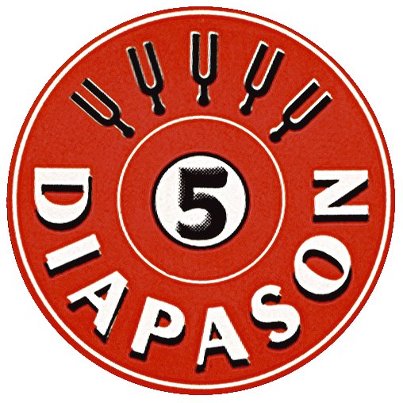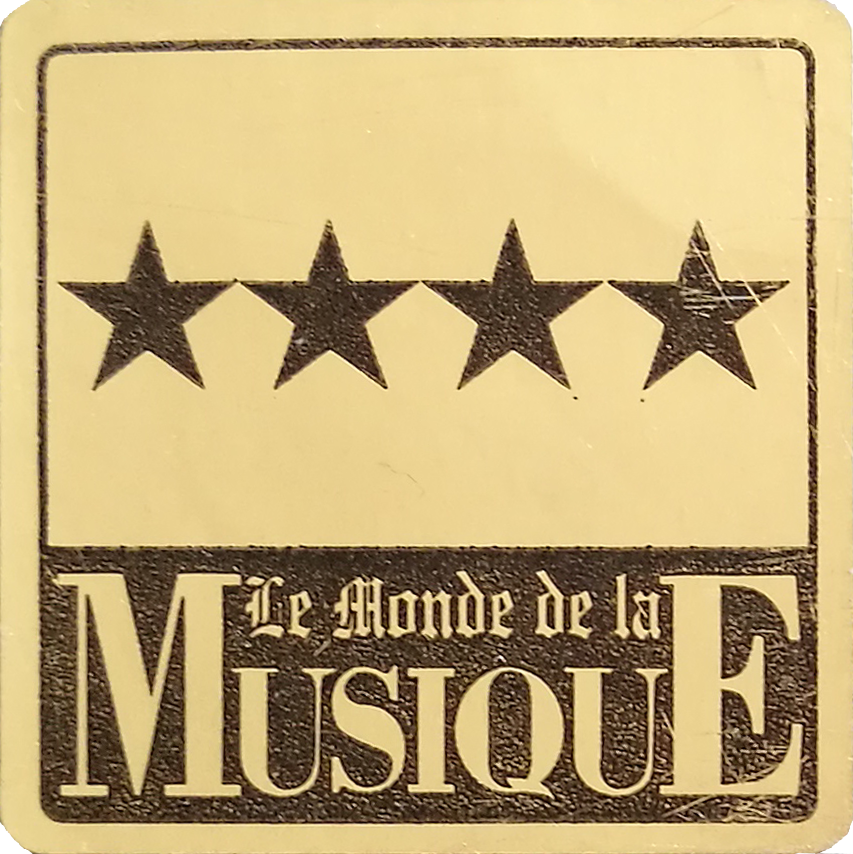Péter Eötvös Atlantis
℗ 1999, 2002, 2019
If someone who didn’t yet know the art of Péter Eötvös were to ask me where to begin, I’d be sure to recommend this CD. (...) An extremely colourful and expressive musical world, in which (with the exception of the moment of mourning), the complexity of the universe and the playfulness of the earthly world complement and also reinforce one another. The sacred is always present in Eötvös’s music, and he often uses profane means to render the dignity of the sacred even more humane, while he is also able to raise the most profane parts of music to the level of the sacred. For me, this is “musica humana” in the best sense of the term, and in the background there is always the latent presence of Péter Eötvös the opera composer.
László Tihanyi
Artists
WDR Symphony Orchestra, Cologne (1-3)
BBC Symphony Orchestra, London (4)
Südwestfunk Symphony Orchestra, Baden-Baden (5-7)
Márta Fábián - cimbalom (1-4)
Dietrich Henschel - baritone (1-3)
Kölner Domchor (4)
Dagmar Becker - flute (5-7)
Wolfgang Meyer - clarinet (5-7)
Peter Eötvös - conductor (1-4)
Hans Zender - conductor (5-7)
About the album
Atlantis (1995)
Text by Sándor Weöres
Recorded by WDR Cologne
Live recording (17 November 1995, Cologne)
Psychokosmos (1993)
Recorded by WDR Cologne
Live recording (2 July 1995, Essen)
Shadows (1996)
Recorded by SWF Baden-Baden
Live recording (15 March 1996, Baden-Baden)
Produced in collaboration with the WDR Symphony Orchestra, the BBC Symphony Orchestra London and the Südwestfunk Symphony Orchestra
Special thanks to the soloists and conductors for their cooperation
Music publisher: Ricordi Verlag München
Recording supervisor: Stephan Hahn (1-4), Helmut Hanusch (5-7)
Balance engineer: Peter Esser (1-4), Frank Wild (5-7)
℗ 2019 Artwork: László Huszár / Greenroom
Produced by László Gőz
Label manager: Tamás Bognár
Reviews
Anastasia Tsioulcas - ClassicsToday - 10/10 (en)
Grant Chu Covell - La Folia (en)
Ashby - American Record Guide (en)
Bertrand Bolognesi - Anaclase.com (fr)
Paul Griffiths - Hungarianquarterly.com (en)
Badische Neueste Nachrichten (de)
Dr. Jürgen Schaarwächter - Klassik.com (de)
R.-J.P.J. - Ritmo (es)
Z. K. Slabý - UNI (cz)
Matti Komulainen - Hifimaailma (fin)
Molnár Szabolcs - Gramofon (1999) ***** (hu)
Kovács Ilona - Gramofon (2019) (hu)
Komlós József JR - Alföldi Régió Magazin (hu)
Péter Eötvös: Atlantis (1995)Text by: Sándor Weöres
Péter Eötvös: Shadows (1996)
Péter Eötvös:
The album is available in digital form at our retail partners
Booklet text of the 20th anniversary new issue, 2019
If someone who didn’t yet know the art of Péter Eötvös were to ask me where to begin, I’d be sure to recommend this CD. The listener gets a picture of the sovereign artistic vision of a versatile composer: what themes preoccupy him, how he reacts to the external world around him, how he responds to his own internal world, and to the brutal incursion of the external into the internal; what his characteristic, favourite instruments are, and what manner of musical communication he tends to favour. An extremely colourful and expressive musical world, in which (with the exception of the moment of mourning), the complexity of the universe and the playfulness of the earthly world complement and also reinforce one another. The sacred is always present in Eötvös’s music, and he often uses profane means to render the dignity of the sacred even more humane, while he is also able to raise the most profane parts of music to the level of the sacred. For me, this is “musica humana” in the best sense of the term, and in the background there is always the latent presence of Péter Eötvös the opera composer.
ATLANTIS
Plato probably had little idea that his account of the myth of Atlantis would leave us with a mystery of the origin of European culture yet to be solved. The myth, which occurs in his dialogue Critias, has inspired the imagination of many, and its interpretation is the subject of persistent discussion. Plato locates the sunken land beyond the “Pillars of Hercules”, thus in the Atlantic Ocean. However, many identify it with the ancient Thera (today’s Santorini), a considerable part of which sank into the sea following a major volcanic eruption. Others ascribe a symbolic meaning to Plato’s story.
For Eötvös the myth of Atlantis represents the development and destruction of cultures, and to this effect, for the text for the vocal parts he chose from Sándor Weöres’s poem Néma zene [Silent Music] an excerpt which tells of this:
mely nem az évekkel süllyedt habokba
a redőtlen szerelmi
korszakért ami folyton
elsötétült így szülte a tört
ént a világtalant
s a törzs nem is meri egymásban feloldani többé
a semmiből élesen kiált
|
Ég
|
szűz
|
szem
|
szárny
|
|
Nap
|
hold
|
gyöngy
|
szél
|
|
anya
|
szív
|
kedv
|
sír
|
|
lomb
|
út
|
sár
|
-
|
This can be rendered in English as:
which sank into the brine
for the smooth age of loving that always darkened
thus was the broken I born, the blind
and the tribe dares merge no longer with one another
piercing cries from oblivion
Atlantis sank. When it happened, nobody knows.]
|
sky
|
virgin
|
eye
|
wing
|
|
sun
|
moon
|
pearl
|
wind
|
|
mother
|
heart
|
spirit
|
grave
|
|
foliage
|
road
|
mud
|
-
|
There are two solo singers, and the baritone takes the role of the narrator: he is the chronicler of events. The child’s voice symbolizes belief in the future, in life, and in the continuity of human culture. The original idea for the piece also featured a choir: the voice of the sunken people. This would have been produced by an interesting German-French cooperation: during the performance, the baritone voice was to be sent from Cologne to IRCAM in Paris, where it would be transformed into choral material and sent back to Cologne, to be heard at the relevant point in the performance. This plan was finally discarded, and Eötvös then decided to use three synthesizers, making it much simpler to produce the illusion of the “underwater voices”.
The commission from the WDR (West German Radio) enabled Eötvös to use an enormous orchestral apparatus. A total of twenty-five woodwind instruments, five trumpets, and five trombones, are divided into five orchestral groups and occupy the front of the platform. In front of them, immediately in front of the conductor, are the three synthesizers, two electric pianos and four saxophones in a semicircle, in what is essentially the position of the soloists; behind them are six horns and two tubas. Further back, on raised daises, in the centre are the two vocal soloists and the cimbalom, and one harp on either side. At the very back, in the choir seats are the two string quintets, and at either end sit the bass guitarist and the flugelhorn. There are ten percussion groups, two in either corner of the platform, while four are almost in the same line as the conductor, according to Eötvös’s instructions “forming an acoustic wall between the orchestra and the audience”. The remaining four percussion groups are located on either side of the auditorium, and behind the back rows of seats. In this manner a completely unique musical space is created, whose delicate balance is aided by amplification from loudspeakers. The symbolic meaning of each group of instruments is related to its musical function. The percussion instruments, located almost throughout the space, represent the ocean. This can be heard most clearly at the beginning of the work. The first melodic element is played on the oboes, and conjures up an imagined ancient melody, which the saxophones follow as if shadows, with “musical phase delay”. This “shadow-function” of the saxophones is a typical feature of the orchestration of the work. The two string quintets symbolize the ten kings of Atlantis, the five sets of twins of Poseidon and Cleito. (This is the origin of the division of the instruments into five or ten groups respectively.) The strings have an independent role in the transition passages between each formal section: they play an imitation of folk music from Szék, referring to a disappearing culture. (For Eötvös, the world of traditional music from Transylvania represents his birthplace. The mix of Hungarian and Romanian elements in the music from Szék, and the material with gamelan associations heard in combination with this, represent for Eötvös a natural state of cultures, multiculturality.)
Formally the composition consists of three parts. The first starts with the voice of a child that seems to be spelling out a sentence of which only fragments remain. The complete text is sung by the baritone in the second part, and becomes the “commentary verse” in the third part. At the end of the piece the synthesizers imitate a bustling, animated scene, which is interrupted by the all-destroying volcanic eruption, or the strike of a comet. The musical material is made of the notes A and E flat, corresponding to the first and last letters of the word Atlantis (S in Hungarian is pronounced as Es, which signifies E flat), and the interval of the tritone can be heard in the first and last bars of the work.
The work was composed in 1995, and the world premiere was given in Cologne in November that year, conducted by the composer.
PSYCHOKOSMOS
“What wonderful times we lived in! I was seventeen years old when Gagarin flew into space. The world became infinite. Inspired by big bang theory, I wrote a piano piece, which I entitled Kozmosz: it was a view out from the Earth to the infinite unknown beyond. The orchestral piece from 1993 is a summary of the previous 33 years musical thinking and sketches: it provides an insight into the infinite unknown within.” So wrote Eötvös in 1994 of his Psychokosmos.
The original piano piece is a charmingly naive “guidebook for space”: after the “big bang”, it leads through clusters of meteors, gas clouds, and galaxies, back to the Earth, where a quotation from Bartók signals our arrival back into the realm of the human. Psychokosmos retains some of the musical ideas from the piano piece, but they are significantly transformed, extended, and enriched with much new material. The inner journey to which Eötvös refers can basically be divided into six stages. The first is completely dominated by the cimbalom, with the orchestra merely cradling, articulating and at times providing counterpoint to the solo’s musical gestures. We enter the inner world with novel combinations of musical elements inherited from the distant past. Reminiscent of a soliloquy, this meditative music becomes gradually richer, denser, and leads to the second part. This is the “active dialogue” between the cimbalom and the orchestra. This process is interrupted by a brief “recitativo”, with declamatory, song-like gestures on the cimbalom, standing out against the static orchestral background. The fourth part is a kind of commentary: it is static, and uses many repetitive elements. This is followed by another “recitativo”, in which once more the song-like motifs of the cimbalom dominate. The closing part has the character of a finale. With extremely rhythmic musical material and great turbulence the piece reaches a climax, after which the textures peter out, the music slows and quietens until the end.
The large orchestra offers an extremely rich variety of colour, which the composer exploited to the full. The cimbalom is one of Eötvös’s favourite instruments, and is rarely absent from his orchestral scores. Here, as a solo, it defines the soundworld for the entire work.
The soloist at the premiere in 1994 in Stuttgart was Márta Fábián, and it is she we hear on this recording, with the BBC Symphony Orchestra, conducted by the composer.
SHADOWS
The inspiration for Shadows is the shadow-world, and mourning. The last movement is heart-rendingly moving, and is dedicated to the memory of Eötvös’s son who died tragically young. But musical renditions of the technique of shadowing, which is common in the visual arts and in film, have preoccupied Eötvös recurrently.
Similarly to Atlantis, here too the layout of the soloists and orchestra is unusual. On the concert platform, in the central, soloist’s position, next to the flute and clarinet soloists, are the side drum and celeste soloists. In a semicircle behind the conductor, sitting with their backs to the audience, are five woodwinds on the left, and five brass on the right. Ten string instruments are located in each of the back corners of the platform, to the left and the right. At the very back in the centre is the orchestral percussionist, who plays three timpani and one bass drum. Eötvös’s peculiar “shadowing technique” creates the following groups:
1. the “shadow” of the solo flute is the woodwind group, whose “shadow” in turn is the left-hand string orchestra;
2. the “shadow” of the solo clarinet is the brass group, whose shadow in turn is the right-hand string orchestra;
3. the “shadow” of the side drum is the percussionist at the back.
The celeste’s role is independent, and in essence links up the orchestral groups that mirror one another. The relationship of the two soloists is based on their differing dramaturgical functions. The flute is active throughout; the clarinet is always passive.
The composition consists of three movements. The first movement is introductory in nature: the soloists dominate, while the orchestra has a more passive, accompanying, articulating, or “shadowing” role. The second movement is active, and in terms of both character and construction conjures up traditional concerto movements. It is in the rich, nimble and highly contrapuntal writing that we find the “shadowing technique” mentioned earlier, and this has special importance in forming the musical texture of the movement. In the first part of the slow, dramatic final movement only the orchestra plays. The heart-rending funeral music is familiar from Atlantis, a slow “mourning dance” imitating traditional Transylvanian music. The piece closes with a cadenza by the two soloists, but this is not followed by a tutti finale: the shadows have died, the sound of the soloists is smothered by the soundless darkness of the shadow-world.
The recording on this CD was made at a performance shortly after the premiere, with soloists Dagmar Becker (flute) and Wolfgang Meyer (clarinet), and the Baden-Baden Southwest German Radio Symphony Orchestra conducted by Hans Zender.
László Tihanyi
Translated by Richard Robinson
eotvospeter.com


